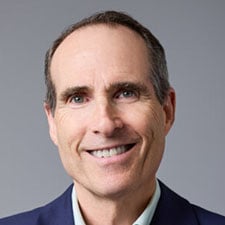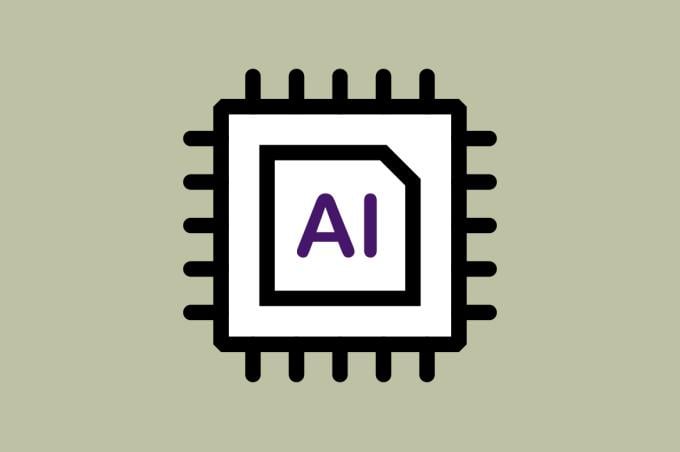Scientist and author Arthur C. Clarke famously stated that "any sufficiently advanced technology is indistinguishable from magic."
Brian Hoberman, MD, recently found himself agreeing with Clarke's sentiment.
Dr. Hoberman is executive vice president of information technology and chief information officer at The Permanente Federation. He is also chief information officer at The Permanente Medical Group in Northern California. The Permanente Medical Group is a member of the AMA Health System Program, which provides enterprise solutions to equip leadership, physicians and care teams with resources to help drive the future of medicine.
The "sufficiently advanced technology" he focused on was an ambient scribe system deployed across all Kaiser Permanente locations.
"It feels like magic," Dr. Hoberman said, "to the docs, and often to the patients."
Dr. Hoberman spoke about the ambient scribe system, how it works and how it's helping physicians during a recent episode of “AMA Update.”
How ambient scribes help physicians
To clarify, ambient scribes are not magical. The tool relies on machine learning and AI to record conversations between physicians and patients, process the information, and generate an after-visit summary.
Having technology that handles note taking allows physicians to focus on what matters most: their patients.
"What docs love about it is that it increases the patient-doc direct connection because you don't have a keyboard and a screen in between them," Dr. Hoberman said "It really does save docs time."
The Permanente Medical Group began a pilot program using ambient scribes about one year ago, Dr. Hoberman said. Since then, the technology has been deployed across all of Kaiser Permanente.
Common fears about using AI revolve around hallucinations—when the AI tool generates false or misleading information. Dr. Hoberman was worried about that as well, but he said that to date, it has not been a major obstacle. Instead, the biggest challenge has been fine-tuning the ambient scribes for specialty-specific workflows and content.
That is because “it's the nature of the work they do,” he said. For example, “if you're an oncologist, your oncological history is going to carry over from note to note, and it wasn't necessarily grabbing that prior information.
“And so, it's doing some work along with the EMR vendor to say: OK, let me go find that templated information that you always move forward. And let me add to that aggregate information as you move your note forward,” Dr. Hoberman added. “There's also some understanding of drug names and other things like that.”
Another example is for psychiatrists or other mental health professionals, for whom the system “is collecting a history and documenting the history that's really fine-tuned for a mental health note as opposed to an internal medicine note, which certainly may touch on behavioral issues,” he explained. “But there are differences, and those differences are simple enough—as you can imagine—that it's an opportunity for the vendor to do some work.”
Even with challenges, the technology is clearly making a difference.
"It's augmentation of the kind of work that for docs or other people in health care is sometimes tedious, burdensome and time consuming," Dr. Hoberman said. "It allows people to turn their attention to those things that a human can contribute to, as opposed to something like banging out a note as you're listening to somebody."
From AI implementation to EHR adoption and usability, the AMA is fighting to make technology work for physicians, ensuring that it is an asset to doctors—not a burden.
Remaining responsible
Ambient scribes are just one way AI is being incorporated into health care. And Dr. Hoberman knows there is a lot of potential for AI within the EHR. In fact, he recently realized how beneficial it could be.
"I had a patient who was on the higher end of the complexity bell curve, and … this patient was brand new to our organization," he said. "There were multiple specialists involved, and I had to synthesize a lot of information.”
AI, “which is pretty good at reading things and reads faster than I do … may help me be a better doctor by appreciating more pertinence to the [patient] story than I was able to appreciate," Dr. Hoberman added.
As new technologies continue to evolve and make their way into health care, it's critical that physicians remember these technologies are not magical. They are tools. It's up to organizational leaders to make sure physicians understand the technology and are comfortable with it, Dr. Hoberman said.
It's also imperative that the technology doesn't get in the way of patient care.
Whenever Dr. Hoberman presents about augmented intelligence, he always includes two slides. One simply says “AI” on it. The second slide says, “Our AI.”
"You really can't talk about AI without thinking about being responsible about AI," he said. "There's an inherent responsibility that physicians have toward doing the right thing for their patients and doing no harm."
The AMA has developed advocacy principles that build on current AI policy. These principles (PDF) address the development, deployment and use of health care AI.
Explore more with JAMA+ AI, which offers scientific content, educational reviews and commentary on AI and medicine published across JAMA®, JAMA Network Open and the JAMA specialty journals.
“AMA Update” is your source for physician-focused news. Hear from physicians and other experts on trending public health concerns, practice issues and more—because who’s doing the talking matters. Catch every episode by subscribing to the AMA’s YouTube channel or listen to all AMA podcasts at ama-assn.org/podcasts.





